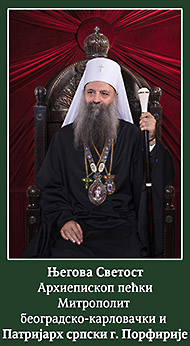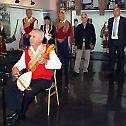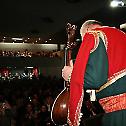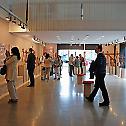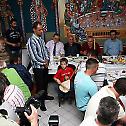Intangible Cultural Heritage: Singing to Accompaniment of Gusla
As stated in the official UNESCO’s report, Singing to the Accompaniment of the Gusle was inscribed on the Representative List of the Intangible Cultural Heritage of Humanity in 2018.
During the thirteenth session of the Intergovernmental Committee for the Safeguarding of the Intangible Cultural Heritage that took place at Port Louis, Republic of Mauritius, from Monday 26 November to Saturday 1 December 2018 at the Swami Vivekananda International Convention Centre (SVICC), it was decided that Singing to the Accompaniment of the Gusle will enter UNESCO’s List of the Intangible Cultural Heritage of Humanity. Over the six days, the twenty-four States Members of the Committee, elected by the General Assembly of the 2003 Convention, have discussed a number of issues that are important for the safeguarding of living heritage around the world. On this occasion, the agenda of the meeting included the issue “Inscriptions on the Lists”, which led to the expansion of the List of the Intangible Cultural Heritage.
Singing to the Accompaniment of the Gusle was nominated for inscription on the Representative List of the Intangible Cultural Heritage of Humanity in 2017, along 39 other nominated proposals, and during the examination of nominations process, the Committee representatives have made the decision for this performing practice to enter the aforementioned UNESCO’s List.
The proposal for the nomination process included the following short description of the element: “Singing to the accompaniment of the gusle is a performing practice that includes solo singing of folk epic decasyllabic poems, performed by a singer to the accompaniment of the gusle, a one-stringed (exceptionally two-stringed) bowed string instrument. In the past, both the poetic texts and the musical component of guslar songs were transmitted orally, whereas today, the presented texts mostly include the well-known, written ones, while the musical component is shaped through improvisation. This archaic form of folk art promotes the highest ethical values, the importance of kinship and the homogeneity of the community, and it is also a blend of the community's historical memory and traditional music skills. The communities that practice it considers it the most representative element of their identity.”
UNESCO’s Official Website has recently created a page that describes the Singing to the accompaniment of the Gusle as a performing practice.
Singing to the accompaniment of the Gusle – a simple string instrument – is an ancient art of performing primarily heroic epics
Source: Diocese of Eastern America
